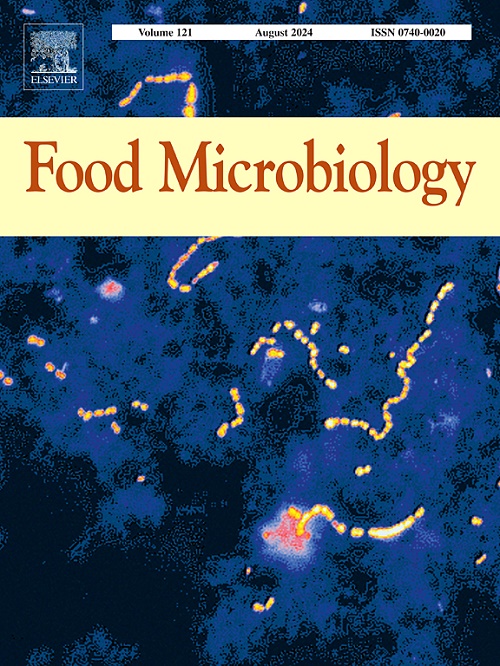Predicting and preventing the next viral disease transmitted through food
IF 4.5
1区 农林科学
Q1 BIOTECHNOLOGY & APPLIED MICROBIOLOGY
引用次数: 0
Abstract
The ability of viruses to infect humans following oral exposure and disrupt normal physiological or anatomical functions is a hallmark of their potential to cause foodborne disease. While the etiology of the vast majority of foodborne diseases remains undetermined, viruses are often identified as the culprit when the cause is ascertained. Many undiagnosed causes of foodborne illnesses, especially sporadic cases, may go undetected or be caused by yet-to-be-identified viruses. The potential for food to become a transmission vehicle for viral diseases that are not typically acquired following ingestion may be described within the epidemiological paradigm. This model considers the characteristics and interactions of the host (the human), the agent (the virus), and the environment (the food, the food producing animal or the food production environment). Importantly, these factors are not static and evolution of viruses, transformations in agrifood systems, and changes in environmental conditions and human health and behaviour may contribute to increased pathogenicity, virulence, or exposure. In the context of determining the potential for additional viruses to emerge as important causes of foodborne disease, factors that contribute to hazard characterization (e.g., receptor affinity and distribution) and exposure assessment (e.g., prevalence in food animals and food hygiene) are reviewed. Although it is not possible to predict the type, the timing nor the location of the emergence of the next important cause of foodborne viral disease, the deployment and implementation of actions and behaviours related to personal and food hygiene, sanitation, and safe food handling practices can reduce the likelihood and impact of known and emergent viruses on the safety of the food supply and human health.
预测和预防下一种通过食物传播的病毒性疾病
病毒在经口接触后感染人类并破坏正常生理或解剖功能的能力是其可能引起食源性疾病的标志。虽然绝大多数食源性疾病的病因尚未确定,但在确定病因后,病毒往往被确定为罪魁祸首。许多未确诊的食源性疾病病因,特别是散发病例,可能未被发现或由尚未查明的病毒引起。食物有可能成为病毒性疾病的传播媒介,而这些疾病通常不是在摄入后获得的,这种可能性可以用流行病学范式来描述。该模型考虑了宿主(人)、病原体(病毒)和环境(食品、生产食品的动物或食品生产环境)的特征和相互作用。重要的是,这些因素不是静态的,病毒的进化、农业食品系统的转变以及环境条件和人类健康和行为的变化都可能导致致病性、毒力或暴露度的增加。在确定其他病毒作为食源性疾病的重要原因出现的可能性的背景下,对危害表征(例如,受体亲和力和分布)和暴露评估(例如,食用动物的流行和食品卫生)的因素进行了审查。虽然不可能预测食源性病毒性疾病下一个重要病因的类型、时间和出现地点,但部署和实施与个人和食品卫生、环境卫生和安全食品处理做法有关的行动和行为,可以减少已知和新出现的病毒对食品供应安全和人类健康的可能性和影响。
本文章由计算机程序翻译,如有差异,请以英文原文为准。
求助全文
约1分钟内获得全文
求助全文
来源期刊

Food microbiology
工程技术-生物工程与应用微生物
CiteScore
11.30
自引率
3.80%
发文量
179
审稿时长
44 days
期刊介绍:
Food Microbiology publishes original research articles, short communications, review papers, letters, news items and book reviews dealing with all aspects of the microbiology of foods. The editors aim to publish manuscripts of the highest quality which are both relevant and applicable to the broad field covered by the journal. Studies must be novel, have a clear connection to food microbiology, and be of general interest to the international community of food microbiologists. The editors make every effort to ensure rapid and fair reviews, resulting in timely publication of accepted manuscripts.
 求助内容:
求助内容: 应助结果提醒方式:
应助结果提醒方式:


